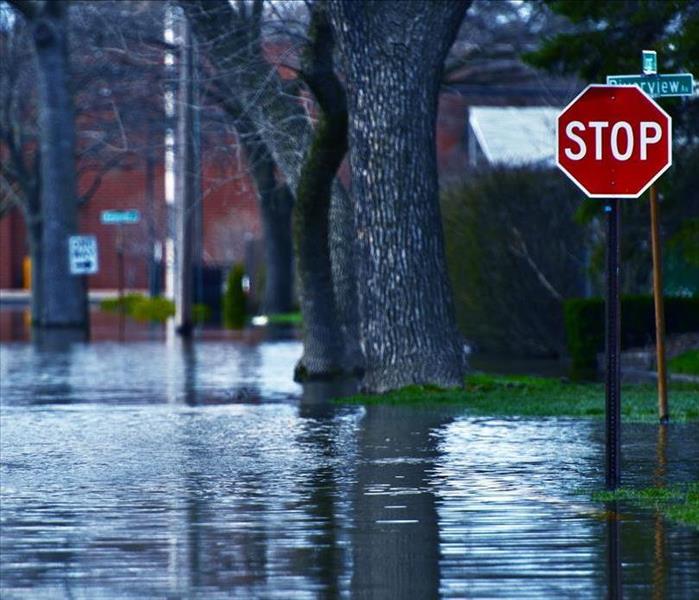Flood Damage Means Dealing With Black Water
3/10/2022 (Permalink)
Operating a successful business in New Bern, NC requires considering all the what-ifs. When that what-if is flood water, the solution isn't as straightforward as it may seem. If your property is flooded, along with the potential damage it may cause during and after the event, the water itself needs to be considered.
Categories of Water
Not all flood water is the same. The Institute of Inspection Cleaning and Restoration Certification, a nonprofit organization, has determined that there are three water categories.
Clear Water:
This is the least severe of the three. It is considered clear because it comes from a source that is free of sewage and non-toxic to humans. Instances of a flood with this type of water include a broken supply line, sink overflow or malfunctioning appliance. While it may be the safest of the three, it still may cause significant damage if not immediately taken care of. If it sits too long, it may evolve into the other types.
Grey Water:
This category means that the water may have some minor chemicals or contaminants that may cause discomfort but may not be too harmful to humans. Water discharging from a dishwasher or washing machine is a common culprit, as well as an overflowing toilet with urine only. While it may not pose a significant danger, it should be treated differently than the first type. Similarly, it can change categories if left unattended.
Black Water:
Highly unsanitary, it contains bacteria, fungi and contaminants that are harmful if ingested. Water from a natural flood falls into this category since the water is often coming from underground sources, thus making it potentially have sewage and chemicals. It also is known to cause black mold. Dealing with damage from this type of water requires extra safety precautions.
Storm Damage Remediation
While you may want to jump right in and start picking up the pieces after the storm, water damage is more serious than it appears. If the source makes it fall into Category 3, it will require extra planning and specialized equipment to properly clean, sanitize and restore the property. Even after the water is gone, it may leave behind lingering effects. Thus, it is recommended to hire a professional to tackle the job.
The first step is getting an assessment and beginning the drying out process. For safety purposes, it is best to avoid affected areas. In many cases, items will be removed to help minimize the spread of damage. Along with industrial sanitizing of the affected items, air scrubbers are used to ensure that unaffected areas remain that way. Dehumidifiers and air mover are also brought in to ensure the property is returned to its original condition.
Throughout the process, it is necessary to wear protective gear, including eye protection, respirations, boots, gloves and waterproof clothing.
While it may seem that any flood water is simply just that, there are different types. Knowing the water source is essential before cleanup can begin. Instead of wondering if it is safe to proceed, it is worth getting the assistance of a professional.




 24/7 Emergency Service
24/7 Emergency Service
